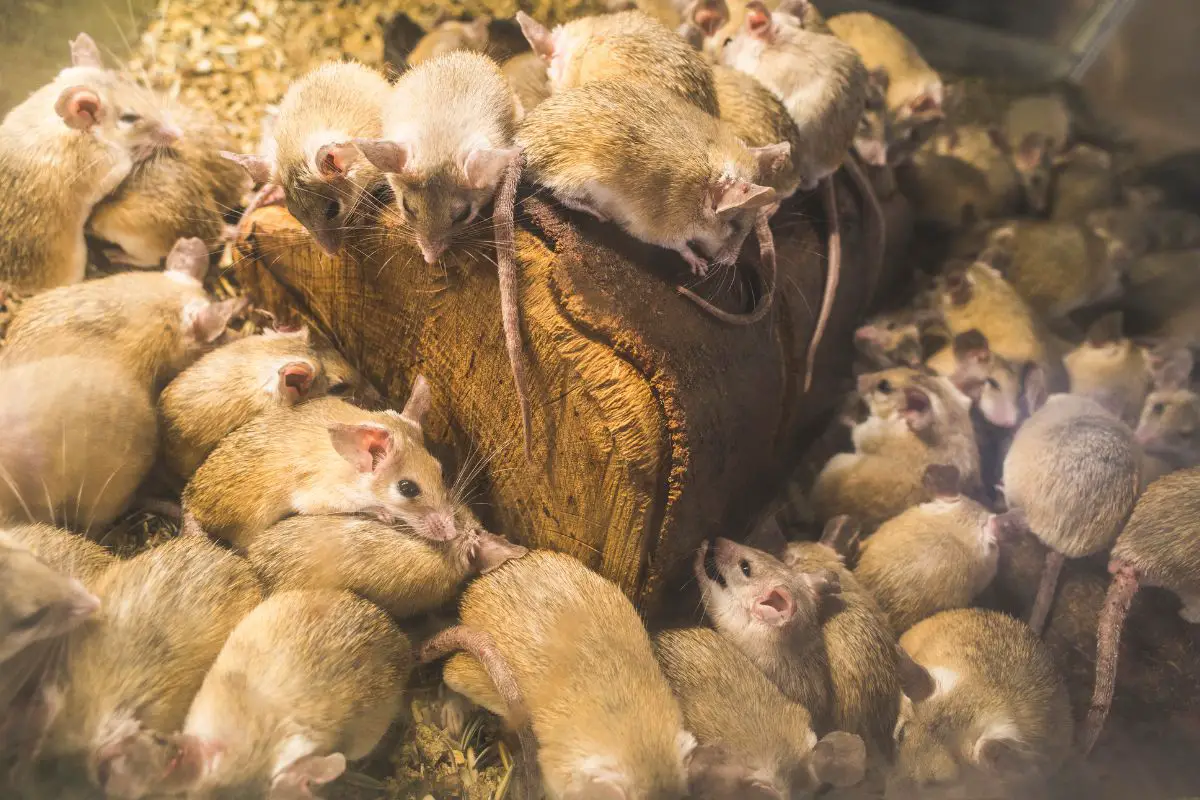
Rats are one of the most controversial animals in the world. While some people think of them as adorable pets, others see them as nothing more than destructive vermin. But no matter your stance on rats, there’s no denying that they’re pretty exciting creatures. Did you know that rats have poor eyesight, but they make up for it with a fantastic sense of smell, hearing, taste, and touch?
Hard to believe considering all the running they do in our homes! These tiny creatures like to live in large groups and are very social. They can communicate through high-pitched squeaks that are too high for humans to hear.
They are also intelligent animals that can learn to do things like run mazes and use tools.
Types of Rats Explained
In a nutshell, a rat is a small mammal that resembles a mouse. It’s a rodent with an elongated snout, pointed ears, and whiskers. However, most rats are much larger and heavier than mice.
They are generally nocturnal and can eat almost anything—including garbage, insects, seeds, pet food, and even each other! There are different rat types, and they can easily confuse you. For example, some people refer to mice as rats. Mice are smaller with slender bodies than rats.
The “true” rat comes from the genus Rattus family. There are 66 rat species, but 64 are the only existing members of the Rattus species from the Muridae family. The most common ones that are widespread globally are the Brown Rat (Rattus norvegicus) and Black Rat (Rattus rattus).
This article will focus on the genus Rattus, commonly referred to as rats. Tag along and learn everything about these small animals, which can be both cute, stubborn and destructive depending on where they are.
1. Brown Rat (Rattus norvegicus)
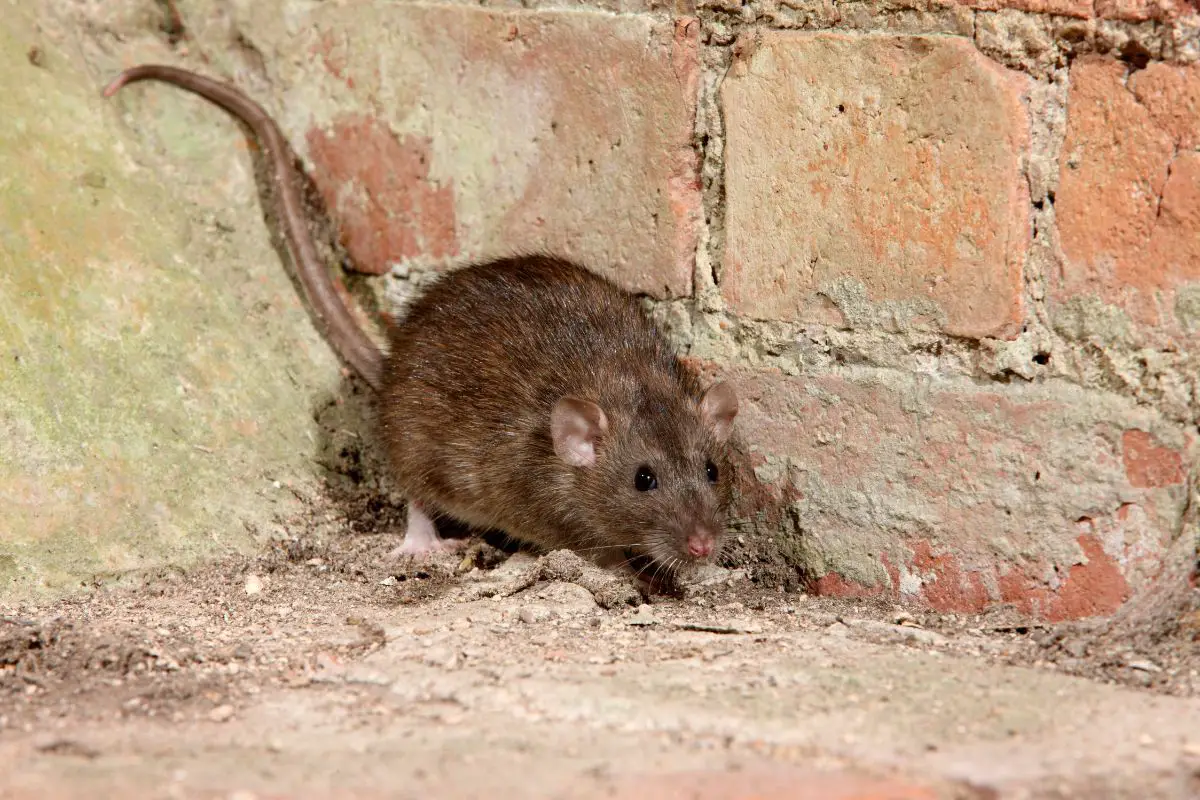
The most common type of rat you’ll find in your home is the Brown rat (Rattus norvegicus). It’s also known as the Norway rat, Hanover rat, Parisian rat, or the Wharf rat. These rats have brown hair on their backs, with gray fur underneath.
Their tails are long and almost naked, and they have small ears.
Features of a Brown Rat
- Size: 15-28 cm (head and body), 10.5-24cm (Tail length)
- Weight:140-500g
- Origin: Asia
- Sleep behavior: Nocturnal
- Territory: Territorial
- Diet: Omnivore (Can eat anything, mostly cereals)
- Food Source: Garbage cans or compost piles
- Habitat: woodlands, basements, sewers, and garbage dumps
- Gestation Period: 21-24 days
- Lifespan: 2 years (Wild)
2. Black Rat (Rattus rattus)
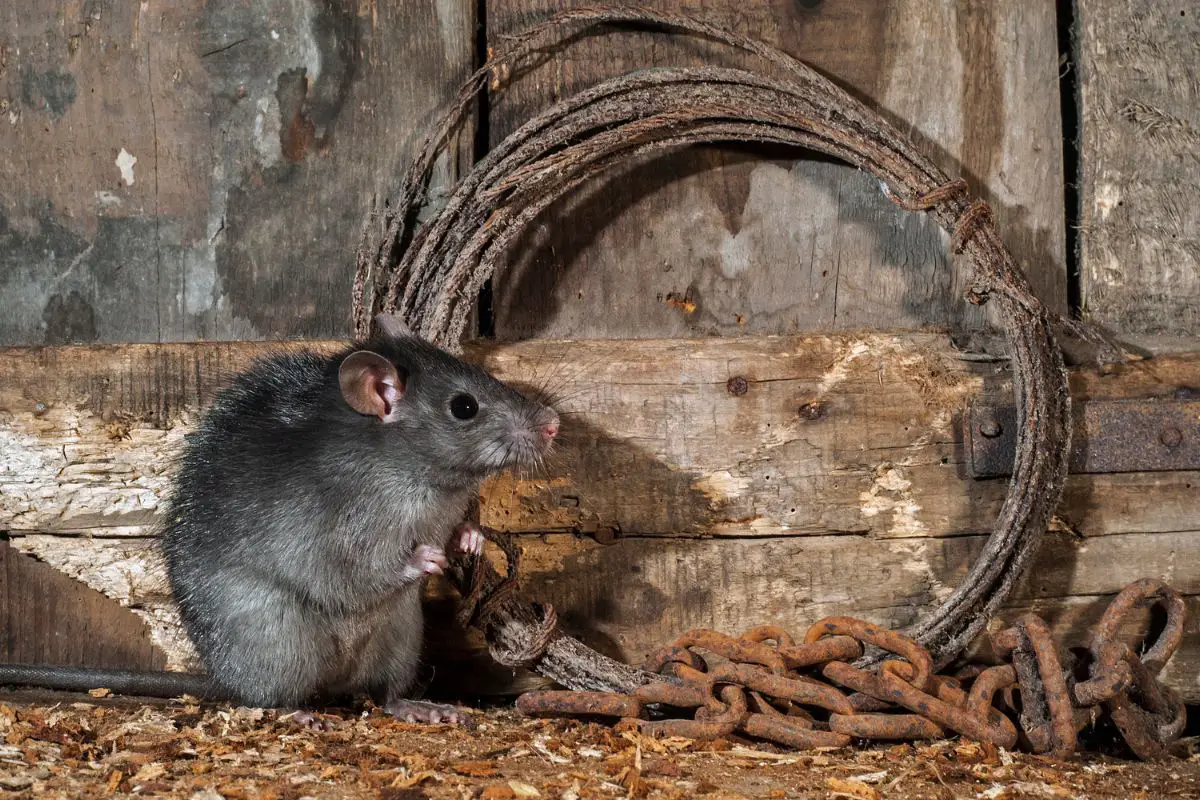
The black rat (Rattus rattus) is also known as the ship rat, roof rat, or house rat. It’s a common rodent with large ears and a longer tail than the body. The black rat has a black or light brown color and is smaller than the Brown rat. It has very destructive behavior and is commonly known as a pest to farmers.
Features of a Black Rat
- Size: 12.75 to 18.25 cm (head and body), 15 to 22 cm (Tail length)
- Weight: 75-230 g
- Origin: India
- Sleep behavior: Nocturnal
- Territory: Domesticated
- Diet: Fruit, stems, leaves, stems, and fungi
- Habitat: Warehouses, residential buildings, crop fields, cliffs, and rocks
- Gestation Period: 23 days
- Lifespan: 12 months
3. Fancy Rat (Rattus Norvegicus domestica)
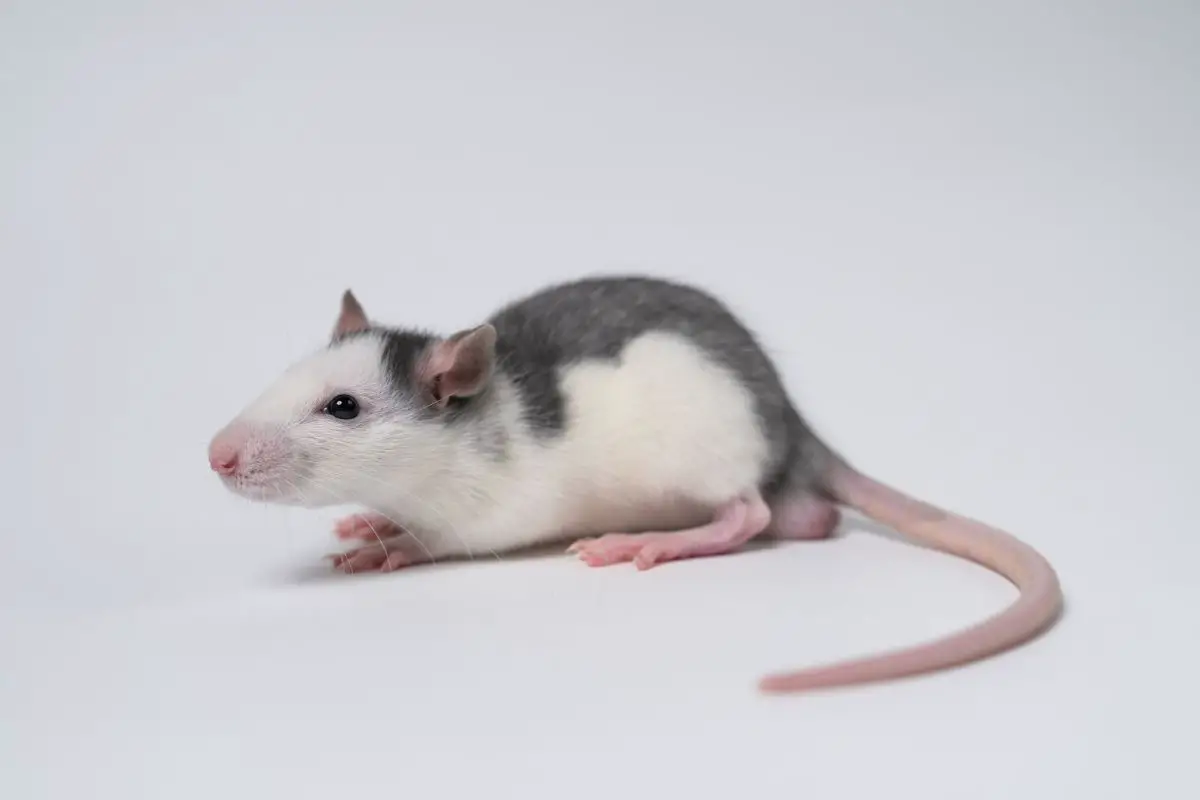
The fancy rat is a domesticated brown rat. It is the most common breed of pet rat and is often confused with the Norway rat. The Fancy rat fur has at least 32 colors, including white, gray, black, red, brown, and others. It’s mainly used for medical research.
Features of A Fancy Rat
- Size: 22.86-28 (head and body), 18-23 cm (Tail length) Weight:350-650 g
- Origin: England
- Sleep behavior: Nocturnal
- Territory: Domesticated
- Diet: Balanced diet (Rat pellets or nuggets, fruit, vegetables)
- Habitat: Human habitation
- Gestation Period: 21-23 days
- Lifespan: 2-3 years
4. Bush Rat (Rattus fuscipes)
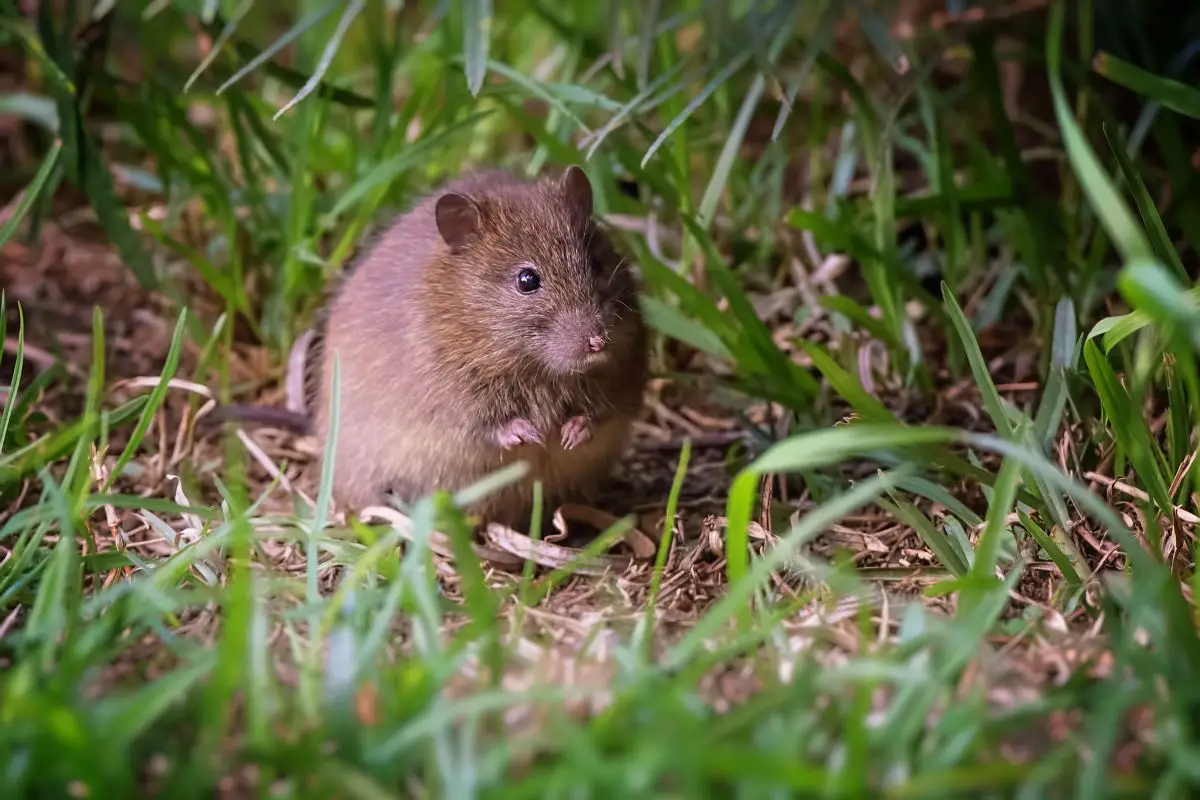
The Bush rat is a small rodent found throughout Australia. It’s primarily nocturnal but may be active during the day in cooler times of the year. Bush rats have a pointed and relatively long muzzle with conspicuous rounded ears.
Its fur is usually light brown or gray, while the underbelly is slightly lighter than its back. There are two subspecies of Bush rat: rattus fuscipes assimilis, Rattus fuscipes coracius, Rattus fuscipes fuscipes and Rattus fuscipes greyii.
Features of Bush Rat
- Size:10-20.5 cm (head and body), 10-19.5 cm (Tail length)
- Weight: 65-225 g
- Sleep behavior: Nocturnal
- Territory: Territorial
- Diet: Insects (Can eat anything)
- Habitat: Cool temperate forests and woodlands
- Gestation Period: 21-23 days
- Lifespan: 2-3 years
5. Bulldog Rat (Rattus nativitatis)

The Rattus Nativitatis is an extinct species endemic to Christmas Island. It had a short, compact body and short legs, which gave it the appearance of a Bulldog. A long snout and dark reddish-brown fur characterize the Bulldog rat.
Features of Bulldog Rat
- Subfamily: Muridae
- Size:25–27 cm (head and body), 17.5 cm (Tail length)
- Weight: 250–300 g (estimation)
- Origin: Australia
- Sleep behavior: Nocturnal
- Territory: Territorial
- Habitat: Higher hills and denser forests of Christmas Island
6. Palm Rat (Rattus palmarum)
There’s not much information about the Palm rat. Most people often confuse a Palm rat with a Black rat. You can only find the Palm rat in the Nicobar Islands, Great Nicobar islands, and on Car Nicobar. It’s listed as a vulnerable species by the International Union for Conservation of Nature (IUCN) Red List of Threatened Species 2016.
7. Polynesian Rat (Rattus exulans)
Polynesian rat, also known as Kiore, Pacific rat, or Little rat, ranks third among the most widespread rat species globally. It’s a medium-sized, robust rodent with large ears, protruding eyes, and a long tail. In addition, the Polynesian rat has a pointed snout and thick fur of variable color depending on location and time of year.
You can distinguish the Polynesian rat from other local species by its smaller and lighter weight, longer tail, and hind feet. They do not breed year-round like many rats do, but instead are restricted to spring and summer.
Features of a Polynesian Rat
- Size:11.5-15cm from nose to the base of the tail
- Weight:40-80g
- Origin: Southeast Asia
- Sleep behavior: Nocturnal
- Diet: Broadleaf plants, earthworms, grasses, fruits, seeds, insects
- Habitat: Grasslands, agricultural land, and forests
- Gestation Period: 23 days
- Lifespan: Less than a year
8. Opossum Rat (Rattus marmosurus)
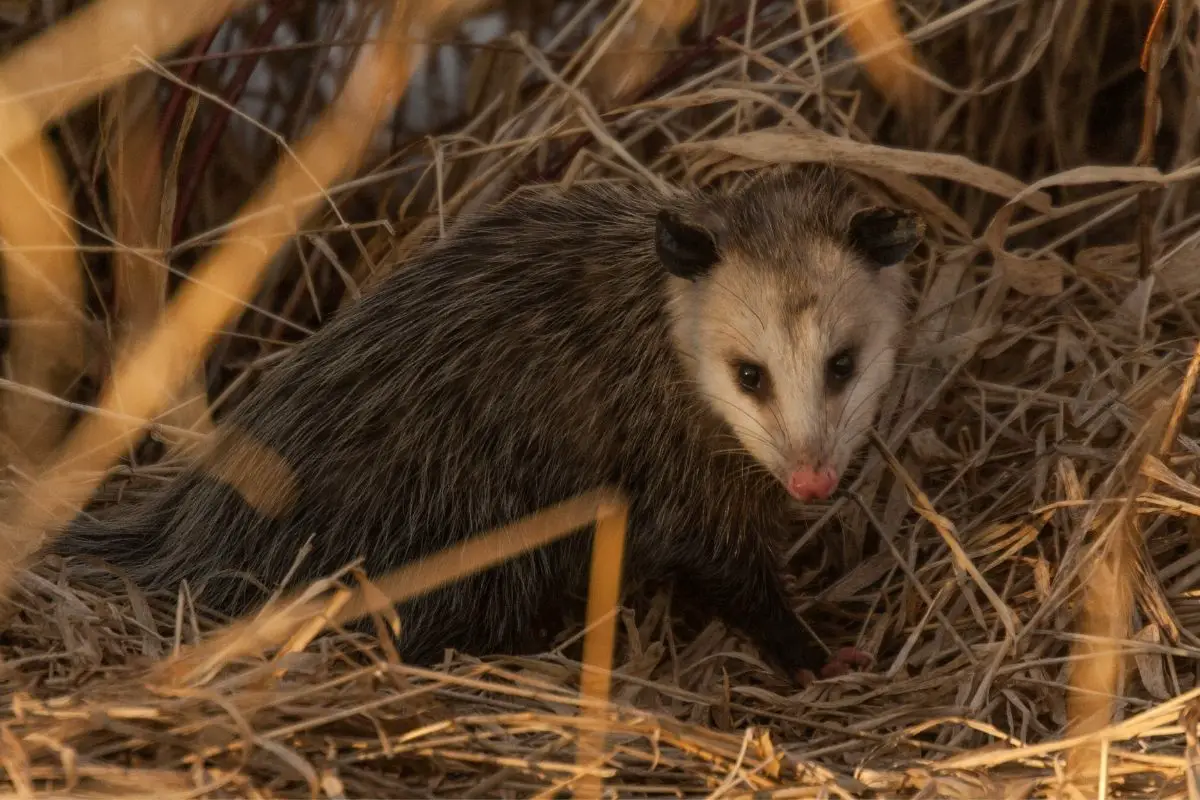
You can only find these rat species of the Muridae family in northern and central Sulawesi, Indonesia.
9. Nonsense rat (Rattus burrus)
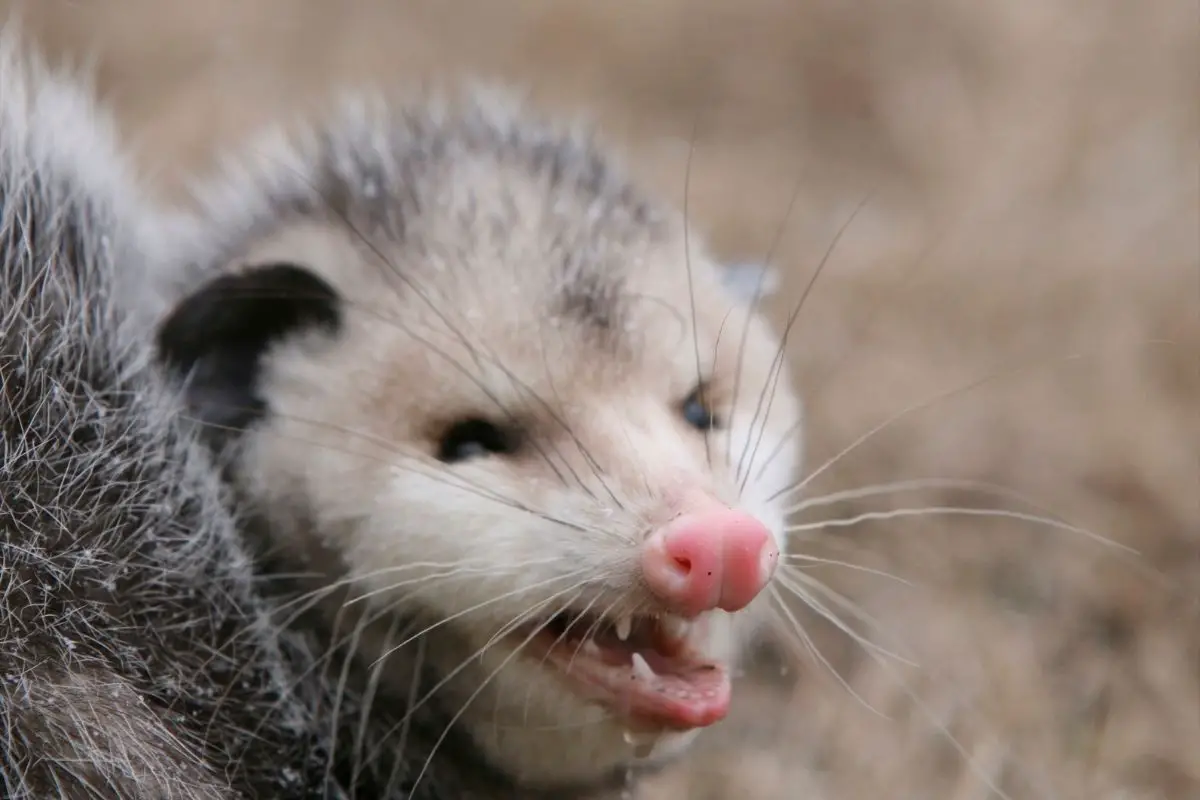
Nonsense rats are restricted to the Nicobar Islands in India. It’s also known as the Nicobar Archipelago rat or Miller’s Nicobar rat. Nonsense rat is found on Great Nicobar, Trinket islands, and Little Nicobar, and it’s a habitat of semi-evergreen forests and tropical evergreen.
The Rattus Burrus rat is listed as an endangered species on the IUCN Red List.
10. Long-Haired Rat (Rattus villosissimus)
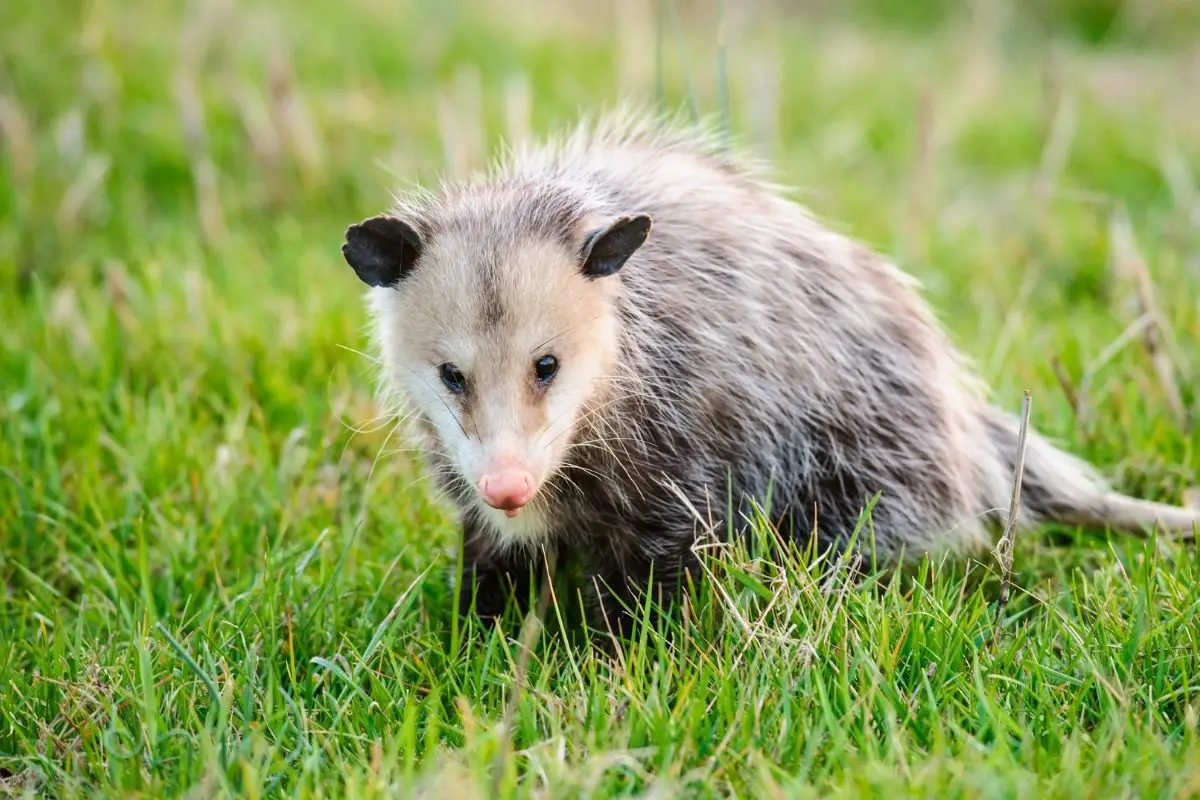
The upper parts of the Long-haired rat (Plague rat) are covered with long, coarse fur that’s generally pale grayish brown, although it can range from dark brown to pale buff. The underparts are grayish-white. The tail is sparsely-haired with a dark gray color.
Males weigh 156 g while females’ weight is 112 g. The average size of a long-haired rat is 18.7 cm and a tail length of 15cm. The female’s size is 16.7 cm, with a tail length of 141cm.
This rat breeds quickly during prolonged periods of rain and dies as soon as the water evaporates, and the food dries. The Long-haired rat is herbivorous, and sometimes it’s believed to be carnivorous or cannibalistic.
Features of a Long-Haired Rat
- Origin: Southeast Australia
- Sleep behavior: Nocturnal
- Diet: Herbivorous. They can also be carnivorous or cannibalistic herbs( Leaves, stems, and roots of grasses, insects, and seeds)
- Habitat: hummock grasslands regions, temperate and subtropical,
- Gestation Period: 22-24 days
11. Tanezumi Rat (Rattus tanezumi)
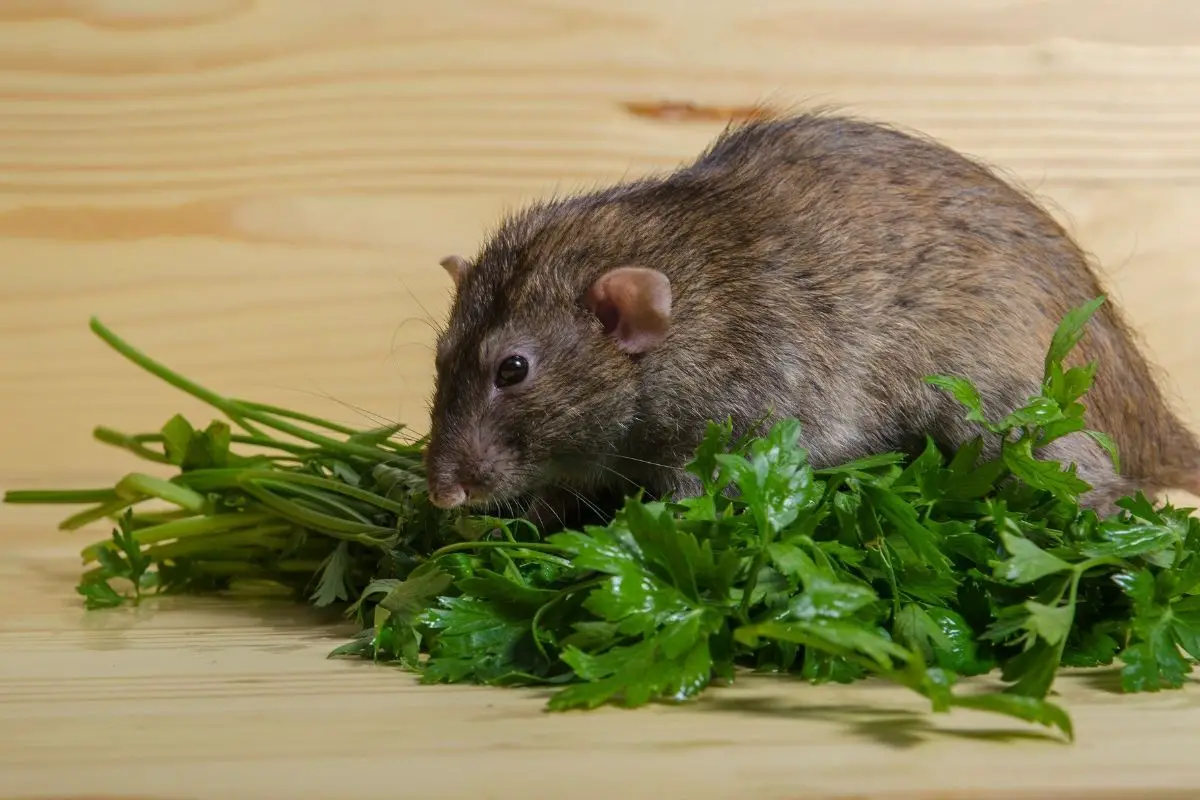
It’s also called the Asian house rat, or the Asian rat characterized by its small olive-brown, with a white underbelly and a scaly, nearly hairless tail. They have a short tail, large ears, and large black eyes. Its body measures 15 to 20 cm long, and the tail is an additional 20 to 25 cm in length.
The Tanezumi closely relates to the Black rat and is known to be a fast runner. It is omnivorous and a pest in the Philippines and Thailand.
Features of Tanezumi Rat
- Weight: 200g
- Origin: Southeast Asia
- Sleep behavior: Nocturnal
- Diet: rice, banana, maize, coconut, and food scraps
- Habitat: Agricultural land and forests
- Gestation Period:22 days
- Lifespan: 2 years
12. Ricefield Rat (Rattus argentiventer)
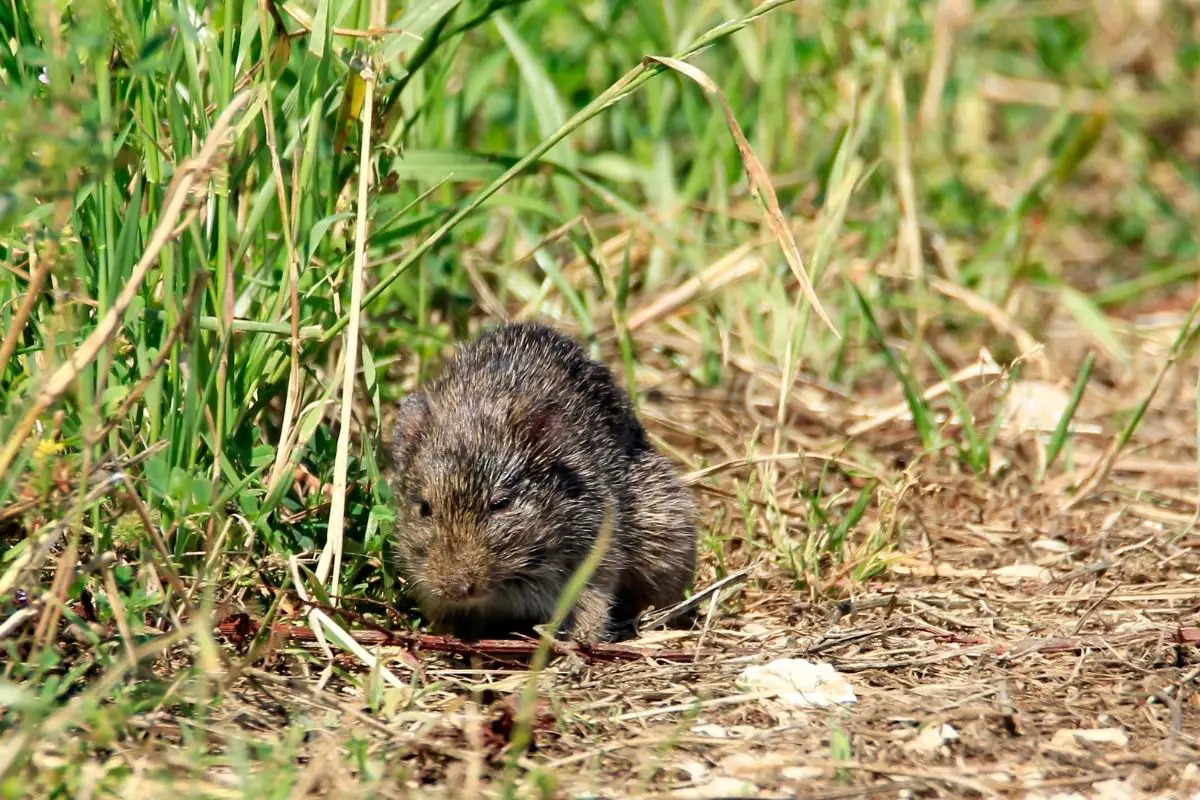
The Ricefield rat is a medium-sized rat characterized by its yellow-brownish fur and gray belly with a white midline. It’s known for having chisel-like incisors. As its name suggests, it prefers to live around rice paddies and cultivated areas.
The Ricefield rat is a source of food in Vietnam.
Features of a Ricefield Rat
- Size:30.4-40cm (head and body) 14-20cm(Tail length)
- Weight: 97-219g
- Origin: Southeast Asia
- Sleep behavior: Nocturnal
- Diet: Rice, termites, insects, grasshoppers, seeds, nuts, snails, vegetables, and fruits
- Habitat: Ricefields or grasslands
- Gestation Period: 21 days
13. Japen Rat (Rattus jobiensis)

The Japen rat is found only in the Yapen, Biak-Supiori, and Owi islands, West Papua, Indonesia. This type of rat is currently listed as an endangered species on the IUCN Red List.
14. Dusky Rat (Rattus colletti)
The dusky rat is a rodent species of the Muridae family and is found only in Northern Territory, Australia, and is commonly known as Mulbbu by Kunwinjku people. Its habitat is savannah or grasslands. This rat has a one-year generation length. The Dusky rat is prey to water pythons and is considered food for humans.
15. Slender Rat (Rattus verecundus)
The Slender rat, also known as Sjang, comes from the family of Muradae and is found in Indonesia, West Papua, and Papua New Guinea. The IUCN Red List notes that the Slender rat has a stable population, and it inhabits forests. In addition, it has a generation length of one year.
16. Australian Swamp Rat (Rattus lutreolus)

The Australian Swamp rat, also the eastern swamp rat, is a rat that inhabits the coastal regions of Australia. It is a big, heavy rat with black feet, black-brown fur, and a white underbelly. Its tail is short in proportion to its body, and it has small eyes and ears.
It has two subspecies: velutinus and lacus. Australian swamp rats spend much time in swamps and other wet areas.
Features of an Australian Swamp Rat
- Size: 16-20 cm (Body)11-14cm (Tail)
- Weight:113.3g
- Origin: Australia
- Sleep behavior: Partly nocturnal and diurnal
- Diet: Herbivore:Vegetarian: (Seeds, fungi, roots and tubers, insects )
- Habitat: Grasslands Sedges, Coastal Heath, Dune Scrub
- Gestation Period: 23-25 days
- Lifespan: 2.4 years
17. Maclear’s Rat (Rattus macleari)
Maclear’s rat is an extinct rat species on Christmas Island. It’s recorded as extinct, but there are high chances that it bred with the black rats. The Maclear’s rat was large, chocolate brown, with a long tail. It had long black hairs on the lower back and had a dark tail base, while the rest was scaly white.
The Maclear’s rat was named after the British survey ship Captain John Maclear. These rats were known to enter expedition tents in search of food. Scientists say they could de-extinct the species. But is it possible, considering its last recorded sighting was in 1903?
Features of a Maclear’s rat
- Origin: Australia
- Sleep behavior: Nocturnal
- Diet: Fruits, skin, leather boots in settlement
- Habitat: Forest (Holes in trees, logs, and shallow burrows)
18. Himalayan Field Rat (Rattus nitidus)
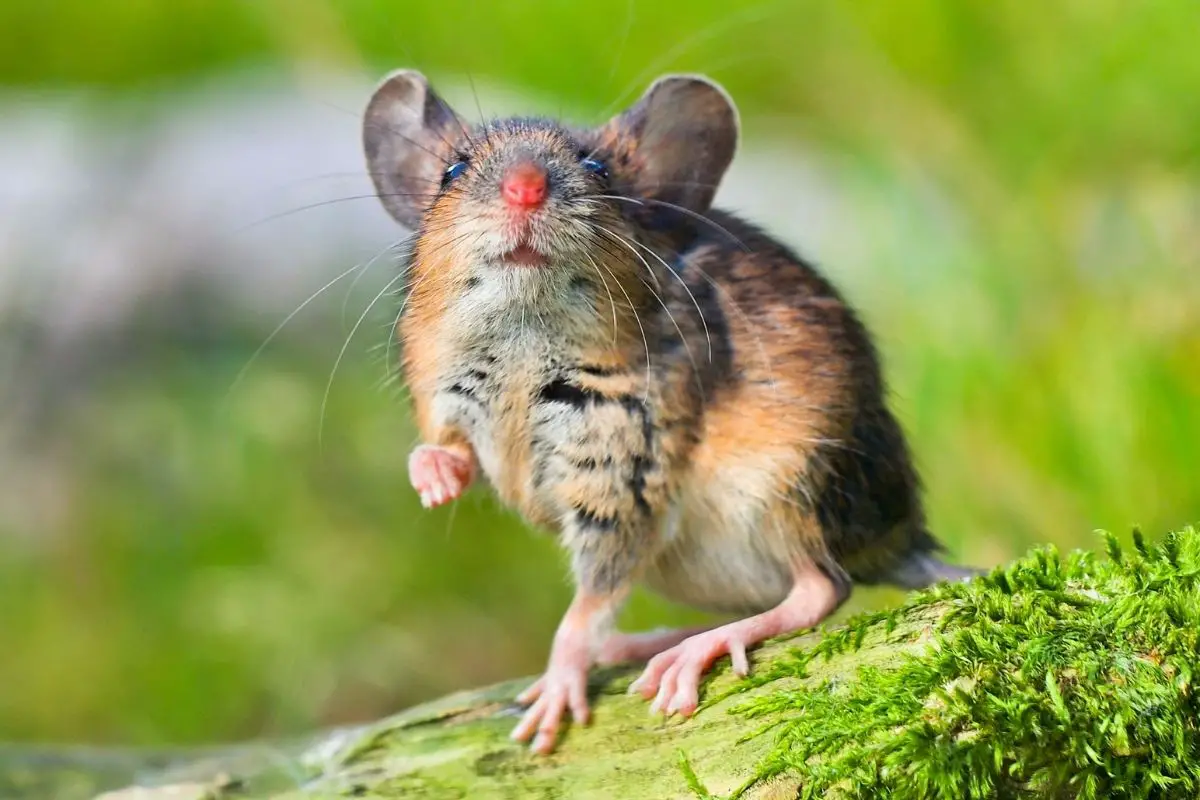
The Himalayan field rat is also referred to as the White-footed Indo-Chinese rat. It has two subspecies, R. n. nitidus, and R. n. obsoletus. It’s covered in brown and grey hair that may have a reddish tint, and the fur on their bellies is whitish. It has white feet with ridges on its soles.
Its tail is hairless and roughly the same length as its body length, which can be up to 16 inches long.
Features of a Himalayan Field Rat
- Size: 16-18 cm (head-body)
- Weight: 100g
- Origin: southeastern Asia
- Sleep behavior: Nocturnal (But active day and night)
- Diet: Shrimp, insects, snails, mussels
- Habitat: Forests, plantations, agricultural lands, and human settlement
- Gestation Period:21-26 days
19. Malayan Field Rat (Rattus tiomanicus)
The Malayan field rat is also known as the Malaysian wood rat or Malaysian field rat. This is a small rodent that can be found in the wilds of Malaysia. It’s most likely to be found in various wooded and scrubby areas, including forests and jungle edges.
It has a tail approximately as long as its body, and it’s the same color as its back. Its back is reddish-brown, while its belly is white or buff-colored.
Features of a Malayan Field Rat
- Size:14-19cm (head-body), 15-20cm (tail)
- Weight: 55-150g
- Sleep behavior: Nocturnal
- Diet: Vegetables, oil palm fruits, animal matter
- Habitat: wooded and scrubby area (under stumps or other natural coverings)
- Gestation Period:22 days
20. Philippine Forest Rat (Rattus everretti)
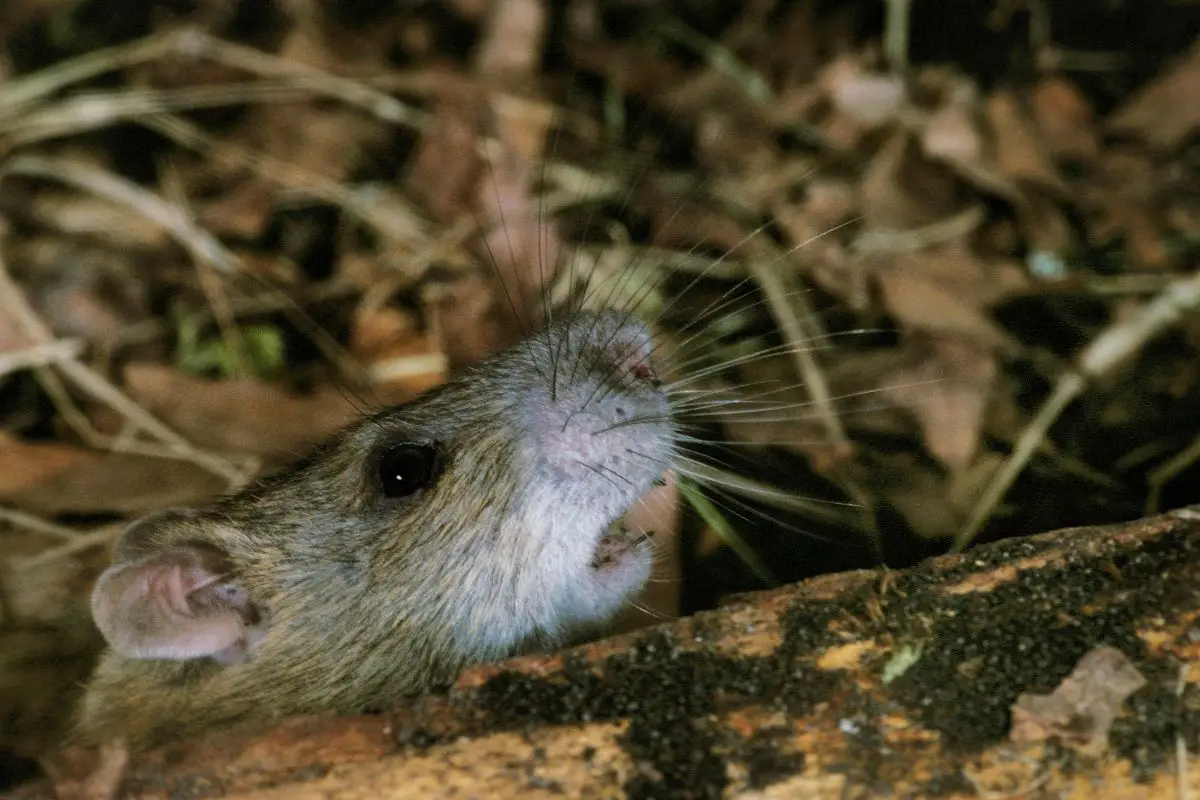
The Philippine forest rat, also known as Chanum Torres, is a rat species endemic to the Philippines and is widely spread throughout the archipelago. It has brown-blackish fur with a paler underbelly and feet. Its tail is long, which helps it in its movement.
Features of a Philippine Forest Rat
- Size: 19cm
- Weight: 250g
- Origin: Asia and Australia
- Sleep behavior: Nocturnal
- Diet: Worms and insects
- Habitat: Shrubby areas, forests
- Gestation:21-26 days
- Lifespan:2-3 years
21. Summit Rat (Rattus baluensis)
The Summit rat (Rattus baluensis) is a rat also known as the Kinabalu rat and is a native to Southeast Asia. It is found in the mountains of Kinabalu and Tambuyukon of Malaysia. They are primarily found in high-altitude forests with an upper elevation of 3,810 and a lower elevation of 1,524 meters above sea level.
This rat has a mutualistic relationship with Nepenthes rajah (pitcher plant). The summit rat uses the pitcher as its toilet to feed on its nectar at night, while the tree shrew (Tupaia Montana) feeds in the daytime.
Features of a Summit Rat
- Size:19 cm
- Weight:110g
- Origin: Asia
- Sleep behavior: Nocturnal
- Habitat: Forest and shrublands
- Lifespan:1-2 years
22. Pale Field Rat (Rattus tunneyi)
The Rattus tunneyi is an endemic rodent species of Australia. It’s medium-sized with a rounded head. Also, it has a pointed nose, protruding eyes, and big pale pinkish ears. Its fur color is a pale brown-orange with a grading of a yellowish-gray or whitish cream on its underside with white feet.
A pale field rat’s tail has no hair and is shorter than its body length.
Features of a Pale Field Rat
- Size:12-19.5 (head-body),8-15 cm (tail)
- Weight: 50-210 g
- Origin: Indian subcontinent
- Sleep behavior: Nocturnal
- Diet: Herbivorous (roots, seeds, and grass stems)
- Habitat: Shallow barrow, grasslands, and cane fields in northern Australia
- Gestation Period:21-22 days
23. Kerala rat (Rattus ranjiniae)
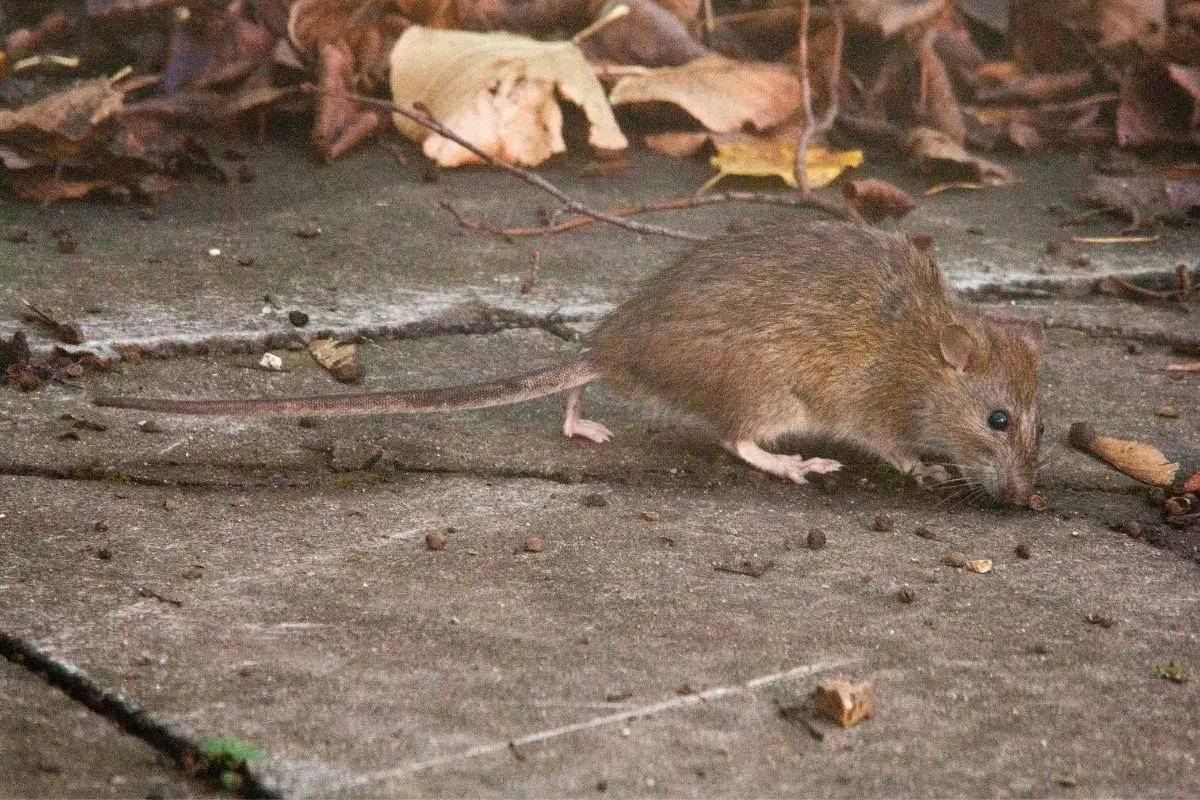
Kerala rat is a medium-sized rodent species that is endemic to Southern India and is recognized for its medium body size. It has brown-yellowish fur and a short tail. It’s a subtropical or tropical habitat of dry lowland grassland and swamps. According to IUCN, the Kerala rat numbers are decreasing.
24. Lesser Ricefield Rat (Rattus losea)
It’s a pretty common type of rat found in southeast Asia. It has brown fur, depending on its locality. They eat grains like rice, which is where its name comes from. They’re found in Malaysia, Indonesia, Vietnam, Thailand, Laos, and Taiwan.
These rats are known to infest rising fields in Southern Asia. Researchers did a four-year population dynamic study on rat inhibition in mixed cropping. During the study, 30% of Lesser ricefield rats were captured, whereas the Ricefield rat (Rattus argentiventer) was 50% and the Black rat 9%.
Lesser Ricefield rats prefer wetter climates with lots of rice fields, but they’ve been known to adapt to other environments. Their breeding seasons are closely linked with rice-planting cycles.
Features of a Lesser Ricefield Rat
- Size:12.5 cm body length
- Weight: 100g
- Origin: Asia
- Sleep behavior: Nocturnal
- Diet: Herbivorous (Rice, roots, seed, and grass stems)
- Habitat: inhabits grass, mangroves, scrub, mangroves, cultivated fields
25. Osgood’s Rat (Rattus osgoodi)
Rattus osgoodi is endemic of Lâm Đồng Province in southern Vietnam. It’s also known as the Osgood’s Vietnamese Rat and is closely related to Rattus losea. Osgood’s rat is an omnivorous mammal and inhabitant of forests, grasslands, and shrublands.
26. Nillu Rat (Rattus montanus)
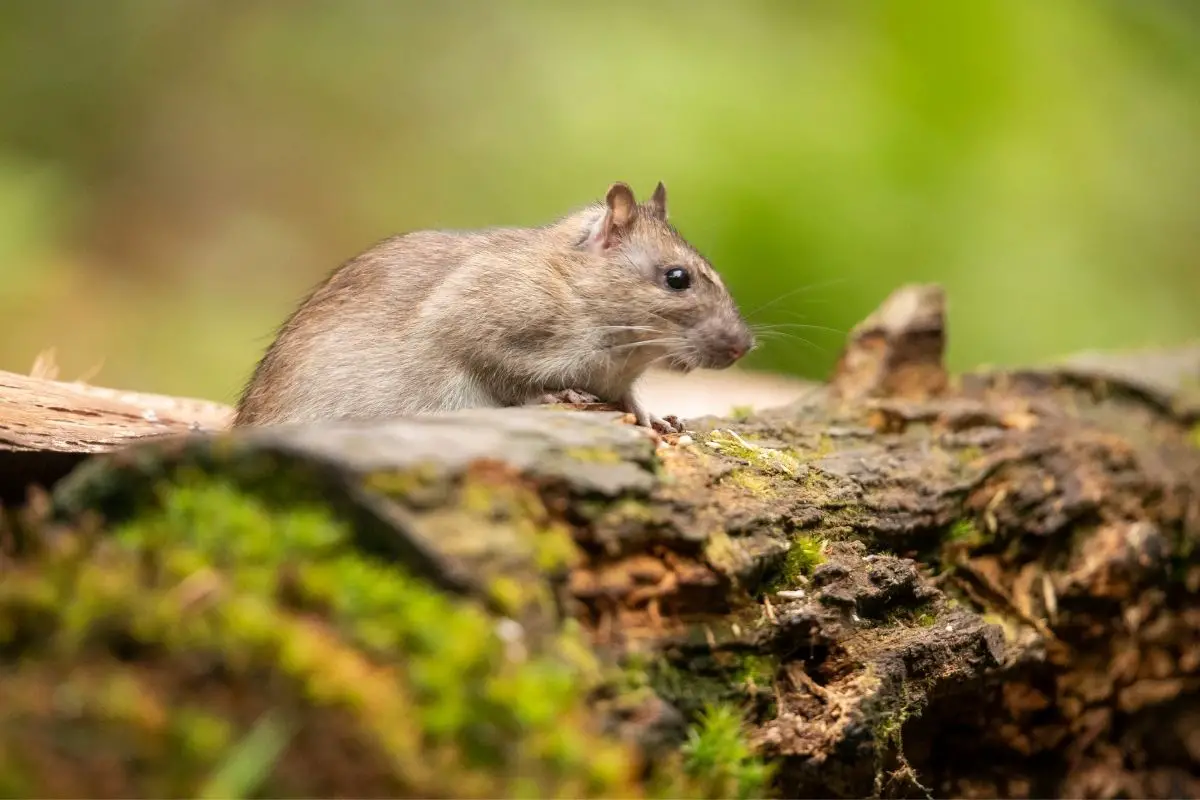
Also referred to as Sri Lankan Mountain Rat is common in the wet zone of Sri Lanka, especially in areas with better rainfall. This species is a climber and inhabits trees and bushes. It also lives in rock crevices and caves.
You can find it at elevations of 2,310 meters above sea level. The Nillu rat is grayish-brown with a hint of the red and gray-whitish underside. Additionally, it has a long blackish tail, white chin, and upper throat.
The IUCN lists the Nillu rat as an endangered species. The Nillu rat diet consists mainly of plant material such as fruit or seeds and includes some insects.
Features of a Niilu Rat
- Size:16-17cm (body length), 20-22cm (tail)
- Origin: Asia
- Sleep behavior: Nocturnal
- Habitat: Tropical montane forest and wet grasslands
27. Sikkim Rat (Rattus andamanensis)
The Sikkim rat is a rodent native to the Andaman Islands, India. The rat is also known as the Indochinese forest rat and is named after the Indian state of Sikkim. The Sikkim rat has a soft, brown coat with white markings on its underbelly, white forearm, and hindfoot. It has a unicolor, rough, and longer tail than the body length.
Features of a Sikkim Rat
- Size:11-19 cm (Body length), 14-20 cm (tail)
- Origin: Asia
- Sleep behavior: Nocturnal
- Habitat: Evergreen montane rain forests, bamboo groves, and gardens near human settlements
- Gestation: 23 days
28. Annandale’s Rat (Sundamys annandale)
This nocturnal rat, also known as the Singapore rat, is found in secondary forests on the island of Sumatra in Indonesia, Peninsular Malaysia, and Singapore. It has a rounded head, medium-sized eyes, and a long tail with almost naked grayish-brown upperparts and pale yellow or white underparts.
The population of this rat is decreasing, according to IUCN. Annandale’s rat was earlier recognized as a Rattus Annandale until 2017 when its genes showed it belongs to the genus Sundamys.
Features of Annandale’s Rat
- Size:22cm(Body), 26cm (Tail)
- Weight:200g
- Origin: Asia
- Sleep behavior: Nocturnal
- Habitat: Secondary forest (rubber or coconut palm plantations.)
29. Cape York Rat (Rattus leucopus)
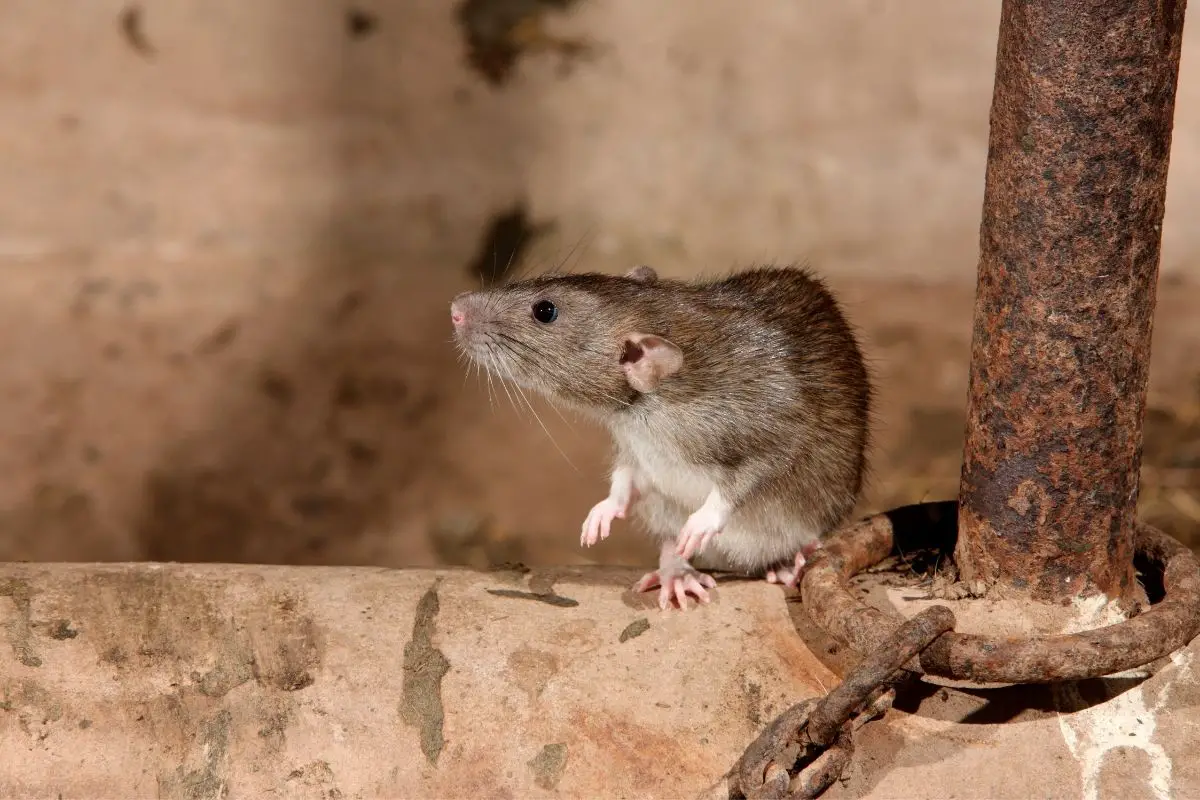
The Cape York rat is a nocturnal, omnivorous rodent species in Australia and Papua New Guinea. This type of rat reproductive maturity is three months, while the female starts reproducing in the fourth month. Additionally, they can give birth to 2-3 liters, with 2-5 young ones.
These rats are inhabitants of primary tropical moist forests and artificial forests.
30. Yellow-Tailed Rat (Rattus xanthurus)
They are also referred to as Northeastern Xanthurus rats. The northeastern Yellow-tailed rat is endemic to northeastern Sulawesi, Indonesia, and are habitats of lowland tropical moist forest and cacao agroforestry systems. The Yellow-tailed rat population is reported to be decreasing.
31. New Guinean Rat (Rattus novaeguineae)
The upper elevation limit for New Guinean rats is 1520 meters, and the lower elevation limit is 740 meters. It has an average weight of 130 g and 18cm body length. The female of this rat gives birth to four to six offspring year-round.
The New Guinean inhabits grasslands, primary tropical moist forest, and secondary forest. It is restricted to central Papua New Guinea.
32. Hoffmann’s Rat (Rattus hoffmanni)
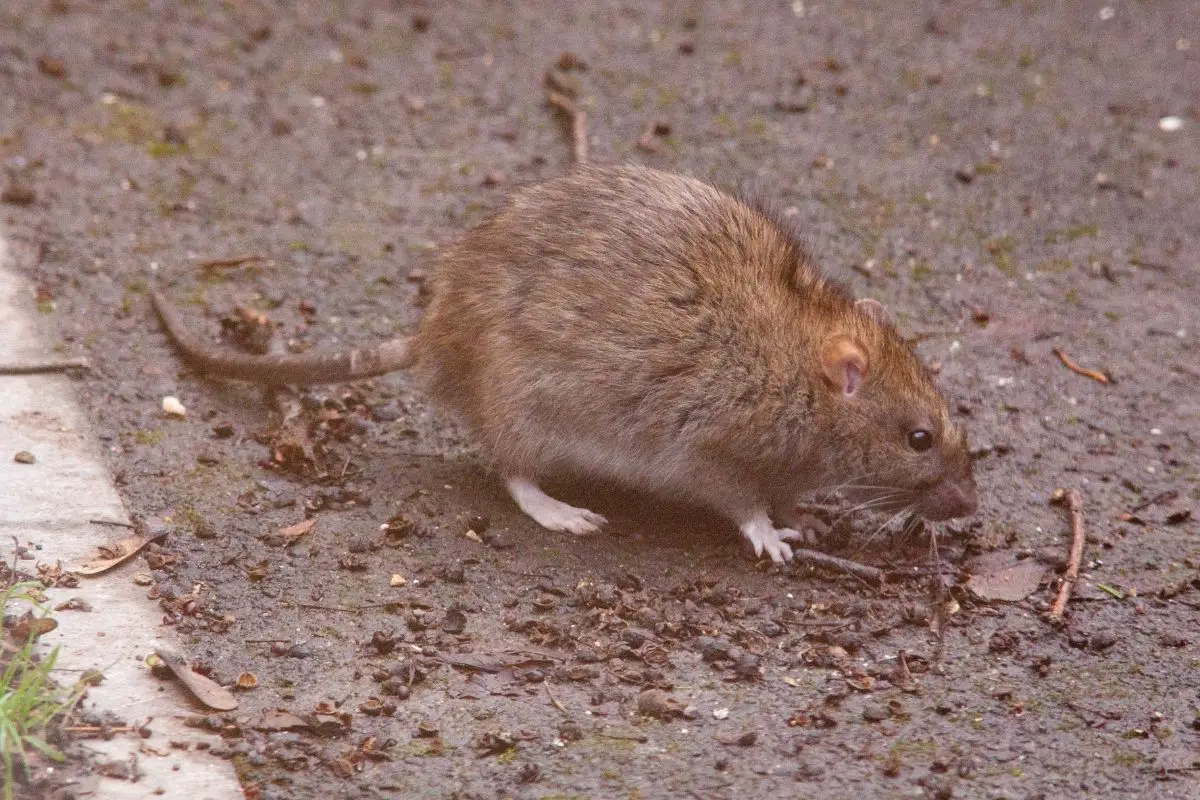
Hoffmann’s rat is a frugivorous terrestrial species found only in Indonesia, precisely in Sulawesi and Malenge island in Togian Islands. It’s mostly found in montane tropical, moist forests. However, you can also find them in secondary plantations such as coffee fields.
33. Turkestan Rat (Rattus pyctoris)
This rat is found at upper and lower elevations of 1,200 to 4,250 meters and spread out throughout Asia. The Turkestan rat is an inhabitant of montane inland cliffs and mountain peaks. Additionally, you can find them in cultivated lands near human settlements.
34. Sunburned Rat (Rattus adustus)
The IUCN has classified this rat as data deficient (DD) since there have been no records about it since the 1920s. The Sunburned rat Enggano Island in Indonesia.
35. Dusky Field Rat (Rattus sordidus)
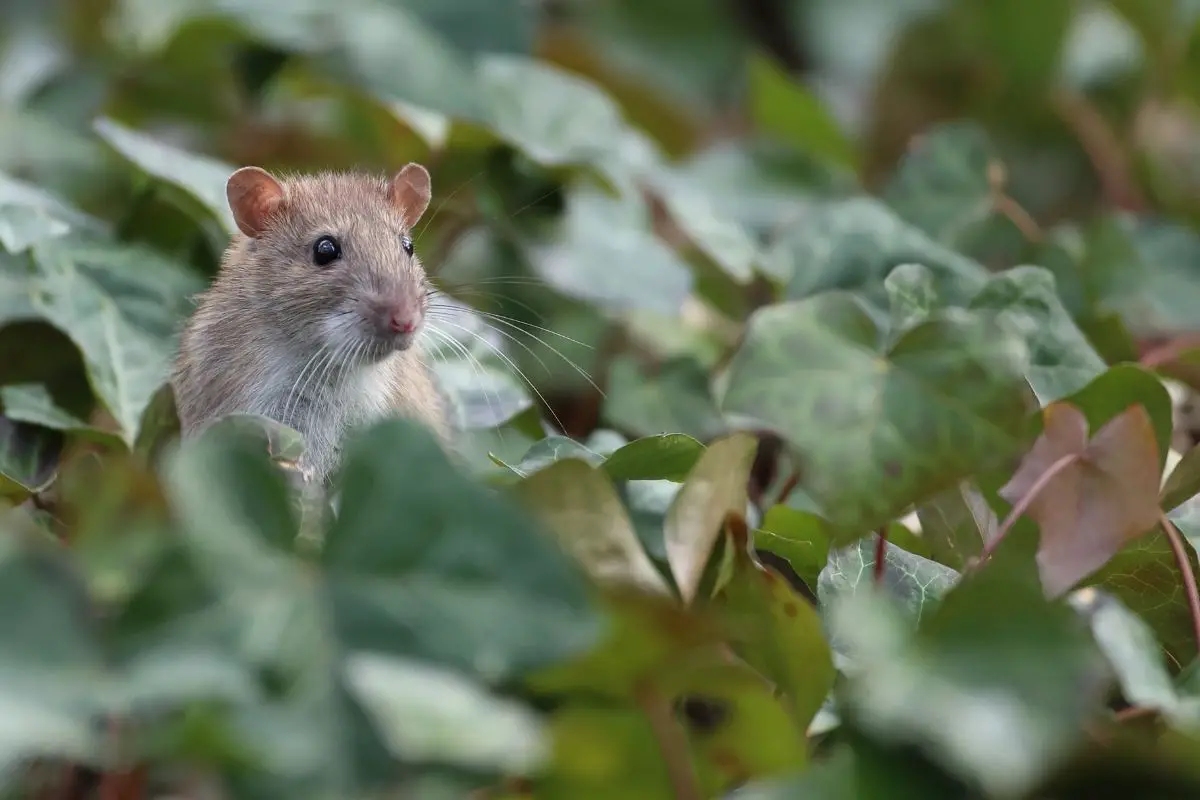
It’s also known as the Canefield rat. Australia, Papua New Guinea, and Indonesia are home to the dusky field rat. They are found at altitudes ranging from 0 to 670 meters.These rats were said to be threatened on the South West Island and may have been eradicated.
The Dusky Field rats live in habitats of grassland, forest, and savanna.
Features of a Dusky Field Rat
- Weight: 150-160g
- Body length:16 cm
- Gestation period: 22 days
36. Mindoro Black Rat (Rattus mindorensis)
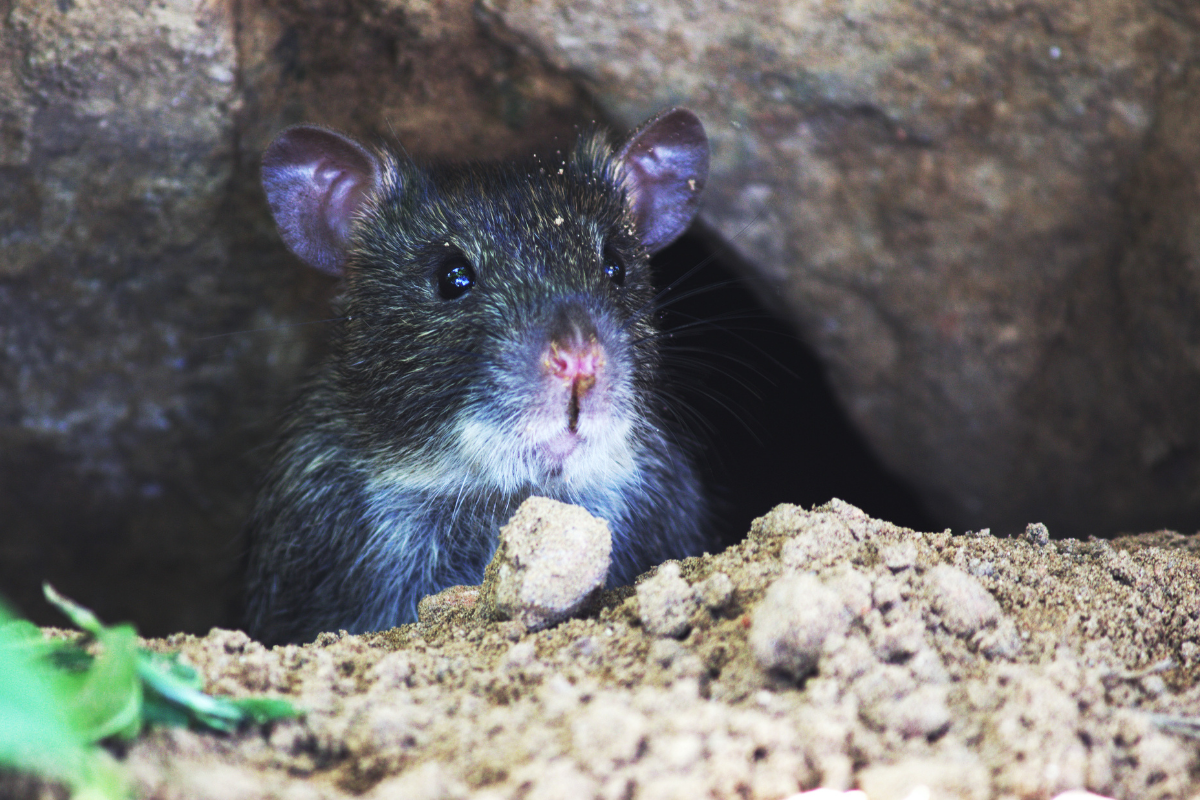
Mindoro black rat is also known as the Mindoro mountain rat and is a native of the Philippines, Mindoro Island. It is mostly found in primary and secondary forests in the eastern Mondoro but has recorded decreasing numbers.
The Mindoro black rat’s average weight is 200 g and 19 cm in body length.
37. Glacier Rat (Rattus richardsoni)
The Glacier rat is an omnivore habitat of shrubland, grassland, and rocky areas from 3,225 to 4,500 meters above sea level. It is endemic in the New Guinea Highlands. The rat has a body length of 12.5 cm and a weight of 64.3 g.
The glacier rat is listed as vulnerable and decreasing in population.
38. Enggano Rat (Rattus enganus)
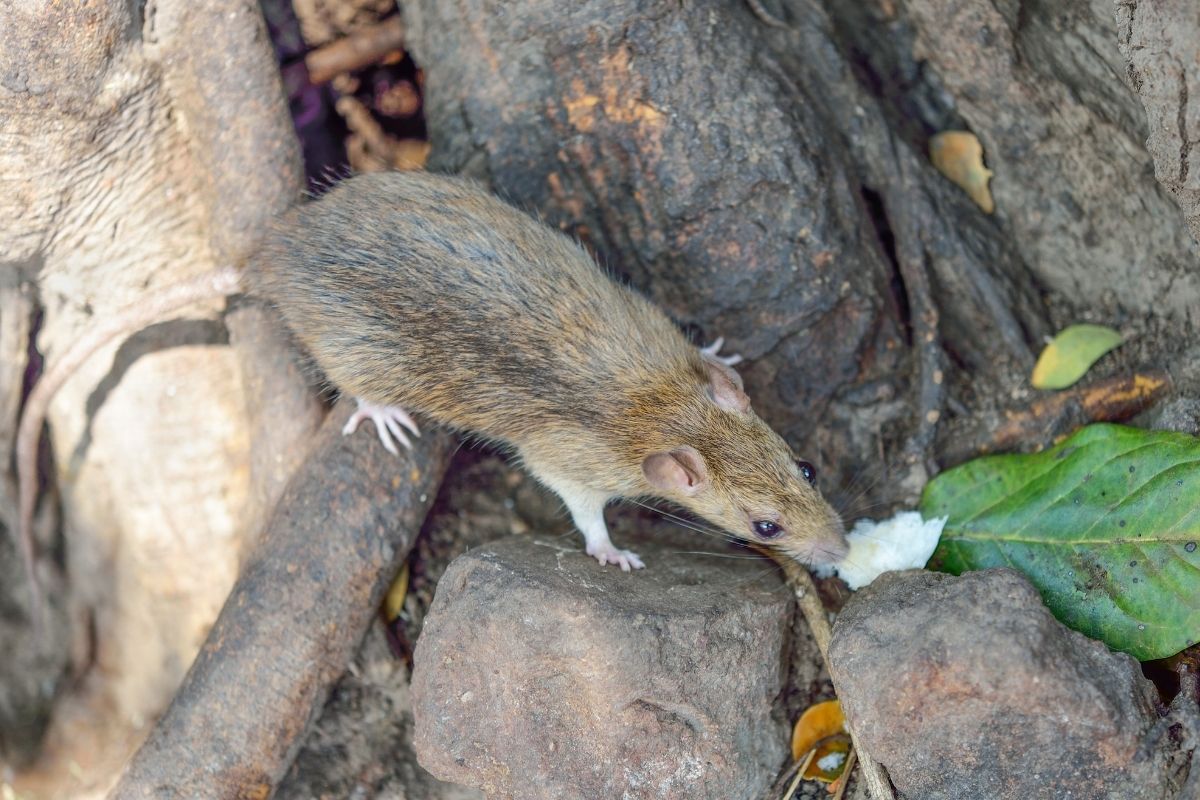
This rat is a primitive Rattus that can be found in forests and is endemic to Enggano Island, Indonesia. The Eggano rat is said to be decreasing in numbers.
39. Andaman rat (Rattus stoicus)
Andaman rat, also known as the Andaman Archipelago rat, is a nocturnal rodent species listed as vulnerable. It’s a highly built rat and can be found only on Andaman Island in Henry Lawrence Island, South Andaman, Middle Andaman, and South Andaman. There’s a continuing decline of the Andaman rat. The rat is a habitat of tropical evergreen forests.
40. Eastern Rat (Rattus mordax)
The Eastern rat is a herbivorous rodent species endemic to Papua New Guinea. Their average body weight is 230 g, and their body length is 17 cm. Their altitude range is 0 to 2,800 meters above sea level.
There’s a chance that these rats don’t have a breeding season. You can find Eastern rats in various environments, including tropical shrubland, mossy tropical forest, and eucalyptus savanna. You can also find them in rural gardens.
The Eastern rat has a one-year generation length.
41. Little Soft-Furred Rat (Rattus mollicomulus)
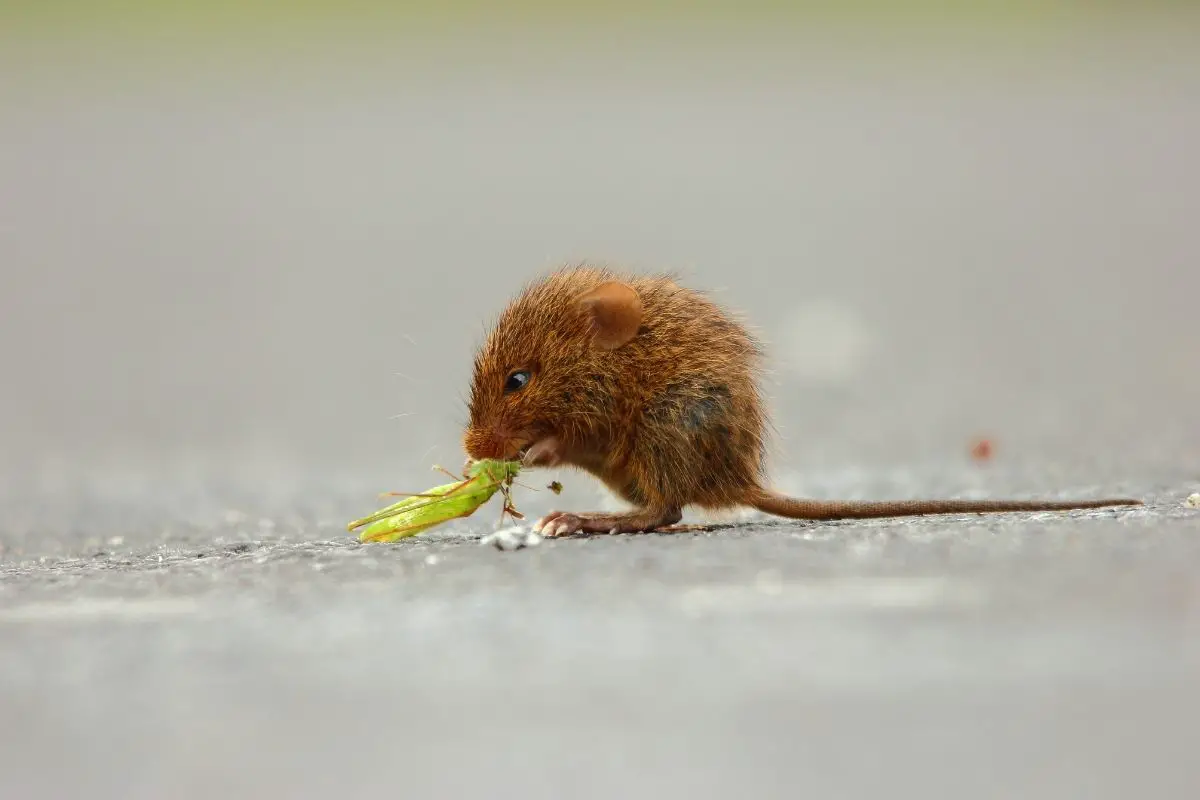
The Little Soft-Furred rat, also known as the Lompobattang Sulawesi rat, gets its name from its soft, silky fur. It’s a native of Indonesia. The Little Soft-Furred rat elevation levels range from 1,100 to 2,000 meters. This rat can be found in different habitats, mostly in tropical montane forests.
42. Moluccan Prehensile-Tailed Rat (Rattus morotaiensis)
They are also known as Halmahara Rat. It’s an arboreal rodent species that is an excellent climber. It’s found in the Halmahera Islands of Indonesia. It has an average body weight of 150g. They are mostly found underground in forests.
43. Kinch’s Rat (Rattus korinchi)
The Korinch’s rat is found in western Sumatra, Indonesia, and is restricted to elevation levels of 2,000 m. Its habitat is the upper montane or moss forest.
44. Hoogerwerf’s Rat (Rattus hoogerwerfi)
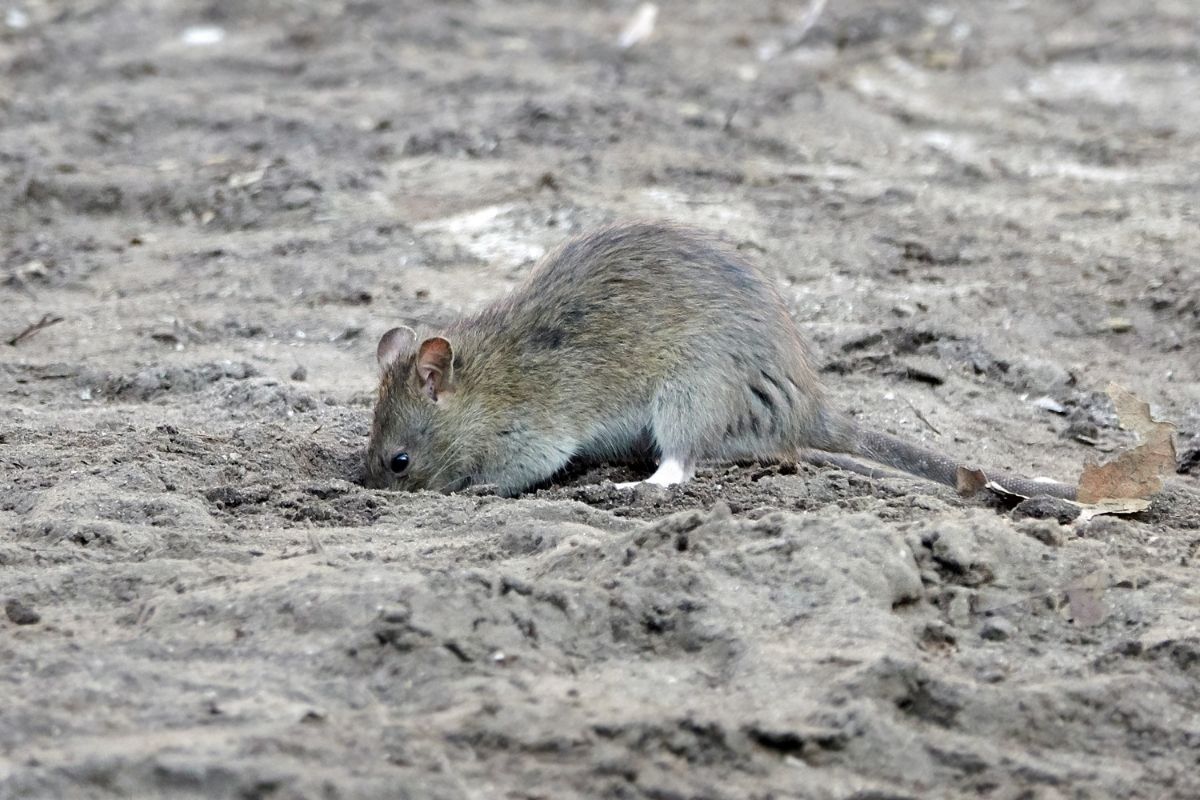
It’s also referred to as Hoogerwerf’s Sumatran rat and is found in Sumatra, Indonesia, at 2,500 to 3000 meters above sea level. You can find them in the upper montane moss forest, but their numbers are declining.
45. Hainald’s Rat (Rattus hainaldi)
Rattus hainaldi is also known as Hainald’s Flores Island rat. It is endemic to Flores Island in Indonesia at 1,000 to 2,000 meters above sea level. You can find them in primary forests and disturbed habitats. Although the Kelimutu National Park protects it, the species are listed as endangered, with a declining population.
46. Mentawai Rat (Rattus lugens)
This type of rat is also referred to as the Mentawai Archipelago rat, which gets its name from the Mentawai Islands, Indonesia. It is registered as a vulnerable species, and its population is also decreasing. These rats are endemic to tropical lowland evergreen forests.
47. Peleng Rat (Rattus pelurus)
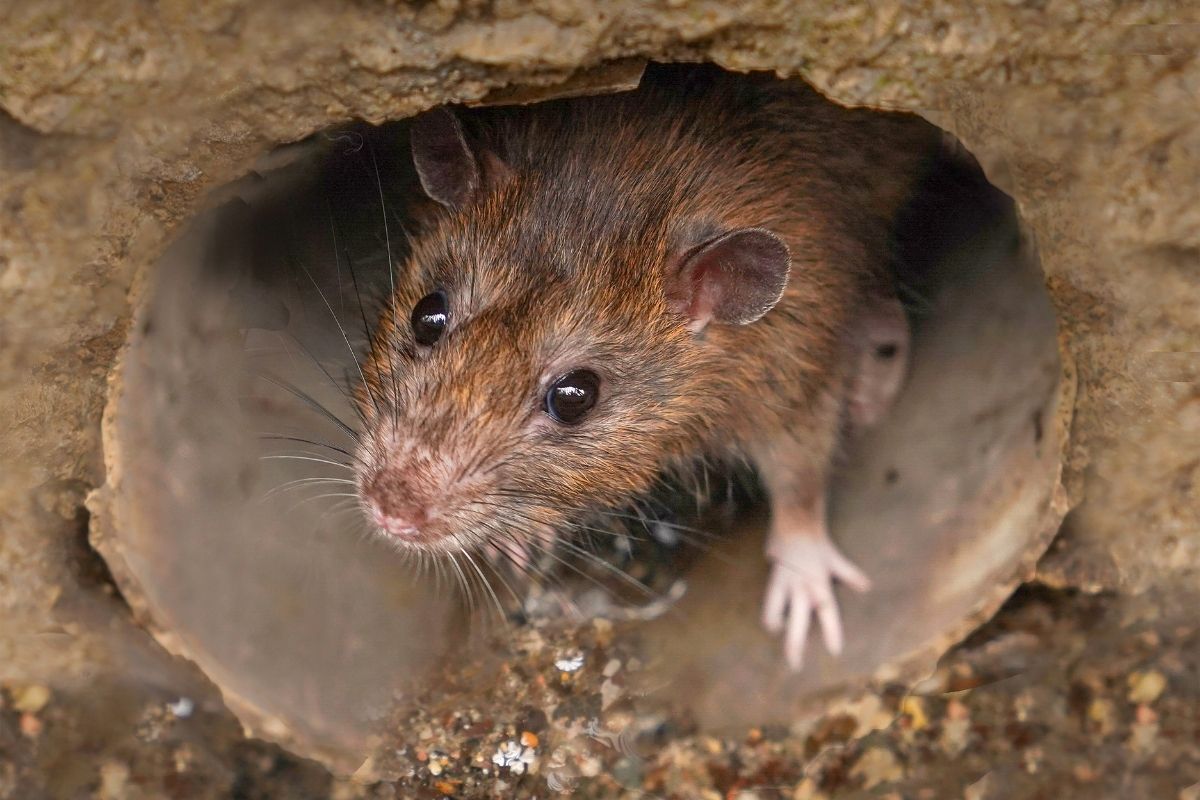
The Peleng rat is also known as Peleng Island Xanthurus rat, and it’s a native of Sulawesi, Indonesia.
48. Tawitawi Forest Rat (Rattus tawitawiensis)
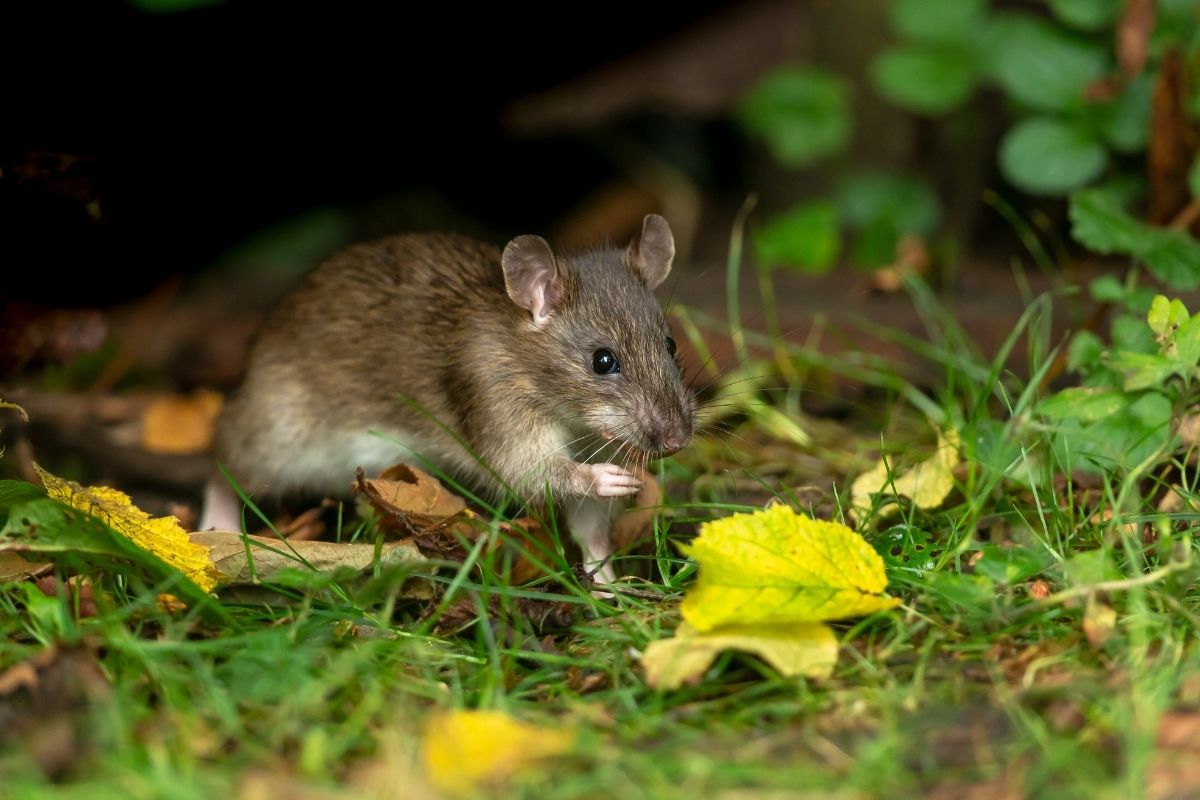
It’s also referred to as Tawitawi Island rat or Peleng Island Xanthurus and comes from Tawi Tawi in the Philippines.
49. Van Deusen’s Rat (Rattus vandeuseni)
The Van Deusen’s rat is an endangered species whose population is declining. Its lower limit elevation is 1,300 meters and is a habitat of the montane tropical moist forest.
50. Sula rat(Rattus elaphinus)
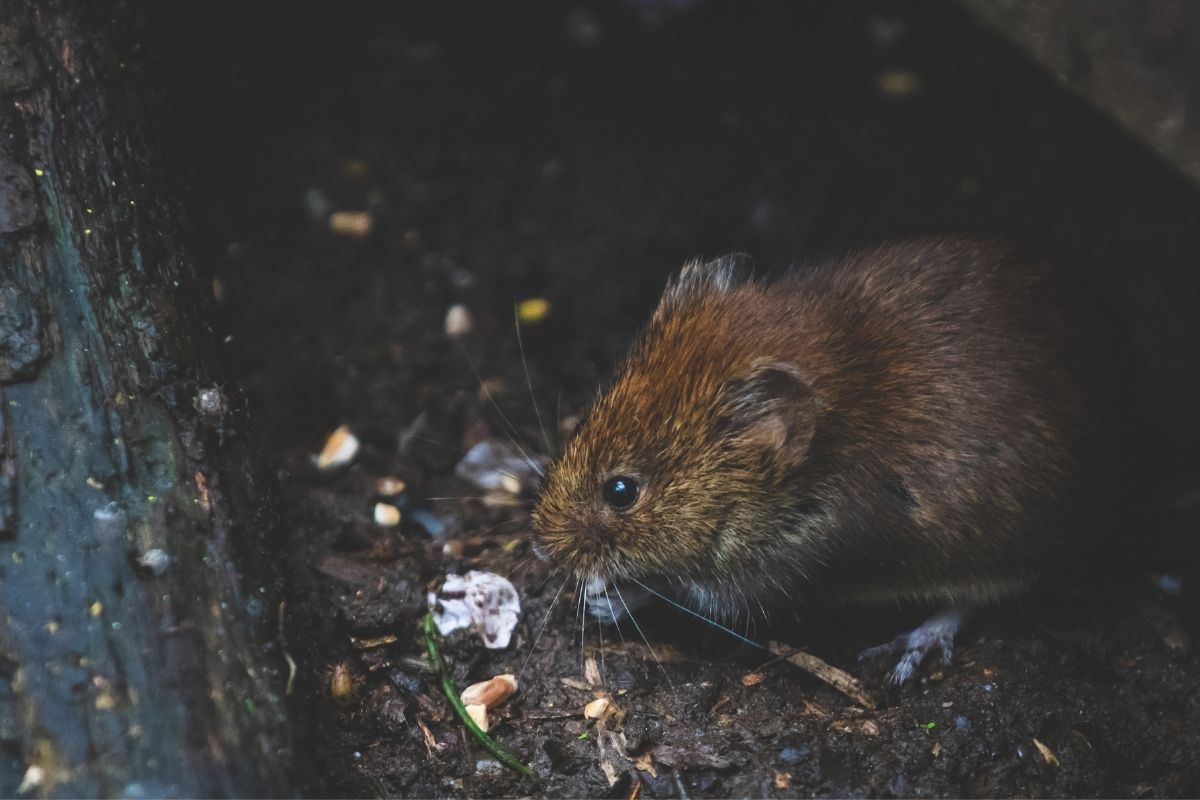
The Sula rat is also known as the Sula Archipelago rat and is a native of Indonesia, Sula Archipelago. It has an average body mass of 131 grams. It’s found in lowland tropical forests and secondary growth such as cocoa plantations. The IUCN lists these rats as a near-threatened species, reducing its population.
51. Timor Rat (Rattus timorensis)
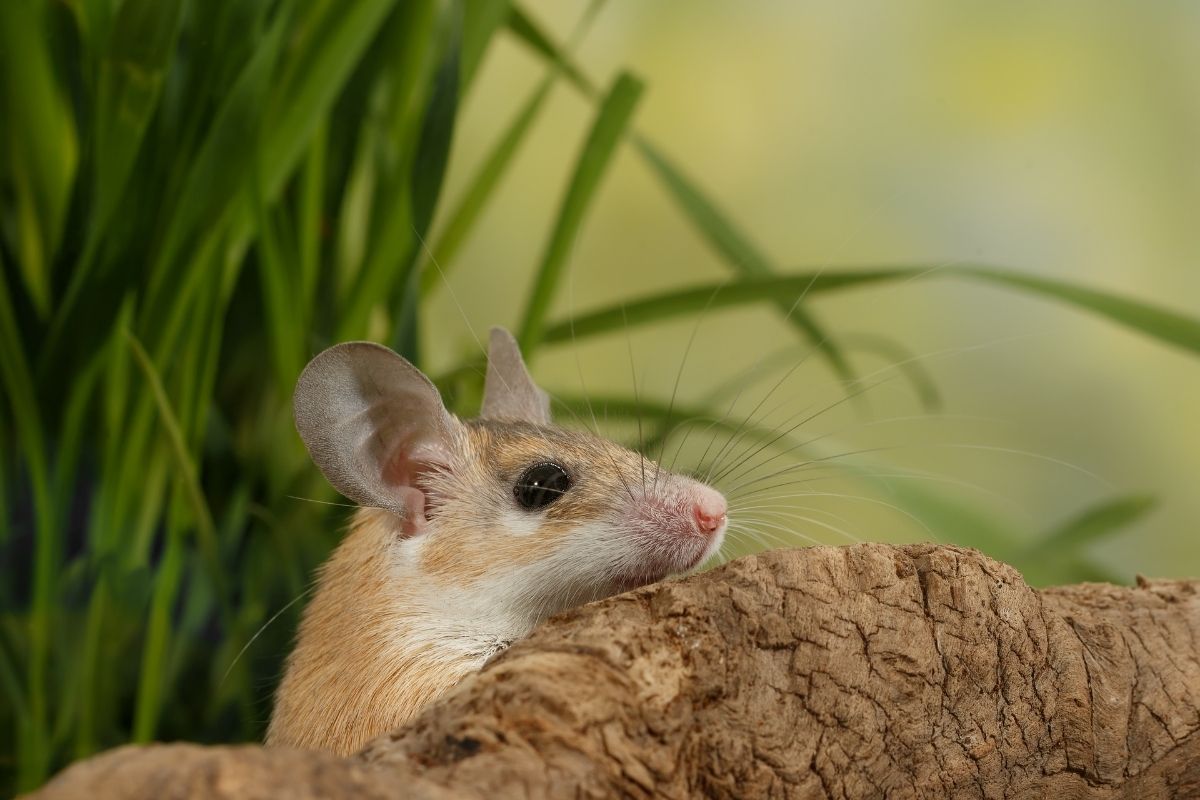
You can find this rat in the teak forests in Indonesian West Timor. They are habitats of subtropical/tropical montane forests. There seem to be a few other Rattus species on which little research has been done. They are, however, present in Indonesia.
- Simalur rat (Rattus simalurensis)
- Bonthain rat (Rattus bontanus)
- Spiny Ceram rat (Rattus feliceus)
- Aceh rat (Rattus blangorum)
- Koopman’s rat (Rattus koopmani)
- Sahyadris forest rat (Rattus satarae)
- Lore Lindu xanthurus rat (Rattus facetus)
- Southeastern xanthurus rat (Rattus salocco)
- Vogelkop mountain rat (Rattus arfakiensis)
- Western New Guinea mountain rat (Rattus arrogans)
- Giluwe rat (Rattus giluwensis)
- Gag Island rat (Rattus nikenii)
- Moss-forest rat (Rattus niobe)
- Pocock’s highland rat (Rattus pocock)
- Large New Guinea spiny rat (Rattus praetor)
- Stein’s rat (Rattus stein)
